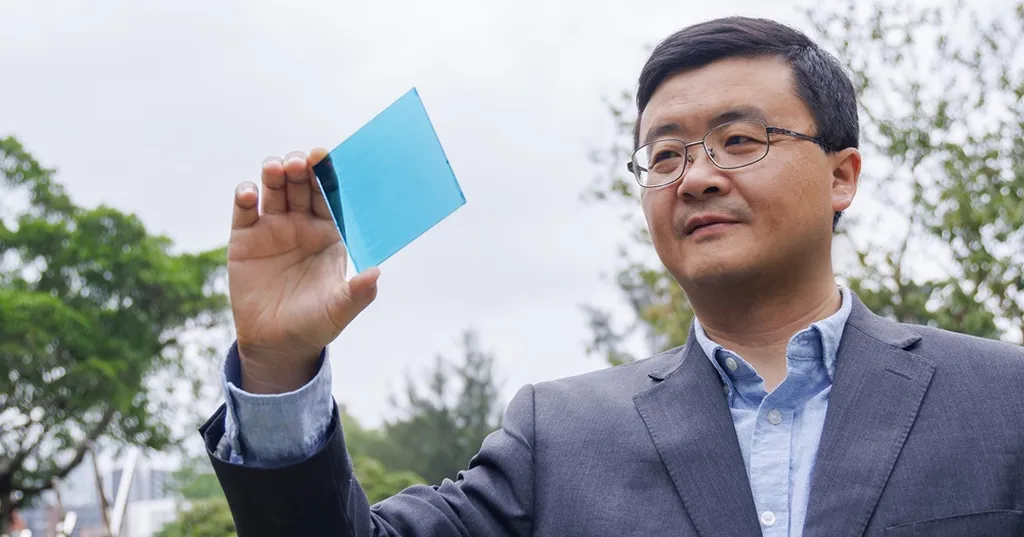In the quest for sustainable energy solutions, researchers are continually pushing the boundaries of solar cell technology. A recent breakthrough from the City University of Hong Kong offers a promising advancement in the field of flexible perovskite solar cells (f-PSCs), with significant implications for the energy sector.
Muhammad Fahim, a researcher from the Department of Mechanical Engineering at the City University of Hong Kong, has developed a novel strategy to enhance the efficiency and stability of f-PSCs. The key to this innovation lies in the introduction of a cascade bridge interlayer made of zeolitic imidazole framework-8 (ZIF-8) at the interface between the perovskite layer and the zinc oxide (ZnO) electron transporting layer.
The ZIF-8 interlayer serves multiple purposes. It uplifts the work function, creating a cascade pathway that facilitates electron transport and reduces interfacial charge recombination. This improvement is crucial for enhancing the overall efficiency of the solar cells. “The ZIF-8 interlayer not only improves electron transport but also passivates the ZnO surface defects by alleviating OH- species,” Fahim explained. This passivation process significantly boosts the device’s stability, addressing one of the major challenges in the development of f-PSCs.
The practical benefits of this research are substantial. The f-PSCs with the ZIF-8 interlayer achieved a stable conversion efficiency of 17.10% with minimal hysteresis. Moreover, by leveraging the piezo-phototronic effect and applying a tensile strain of 1.6%, the efficiency was further increased to 18.47%. This represents one of the highest reported efficiencies for ZnO nanorods-based f-PSCs, positioning this technology at the forefront of solar cell innovation.
One of the most compelling aspects of this research is its focus on environmental sustainability. The ZnO-ZIF-8 interlayer exhibits a high adsorption capacity toward lead, effectively trapping mobile Pb2+ ions at the ZnO/perovskite interface. This feature is crucial for preventing lead leaching, a significant concern in the deployment of perovskite solar cells. “By controlling lead leakage, we can mitigate the environmental impact of these devices, making them a more viable option for widespread adoption,” Fahim noted.
The implications of this research extend beyond immediate efficiency gains. The cascade bridge interlayer strategy opens new avenues for the design and optimization of flexible solar cells. As the energy sector continues to seek more sustainable and efficient solutions, innovations like this are poised to play a pivotal role. The findings were published in Sustainable Materials (SusMat), a journal dedicated to advancing the development of sustainable materials and technologies.
As the world transitions towards renewable energy sources, the development of stable and efficient flexible solar cells is crucial. This research from the City University of Hong Kong represents a significant step forward, offering a blueprint for future advancements in solar cell technology. The commercial impacts are clear: more efficient, stable, and environmentally friendly solar cells could revolutionize the energy sector, making solar power a more viable and attractive option for both residential and industrial applications. As researchers continue to build on these findings, the future of solar energy looks increasingly bright.

